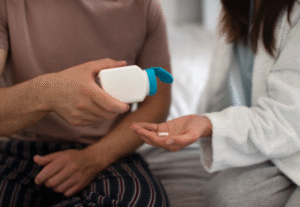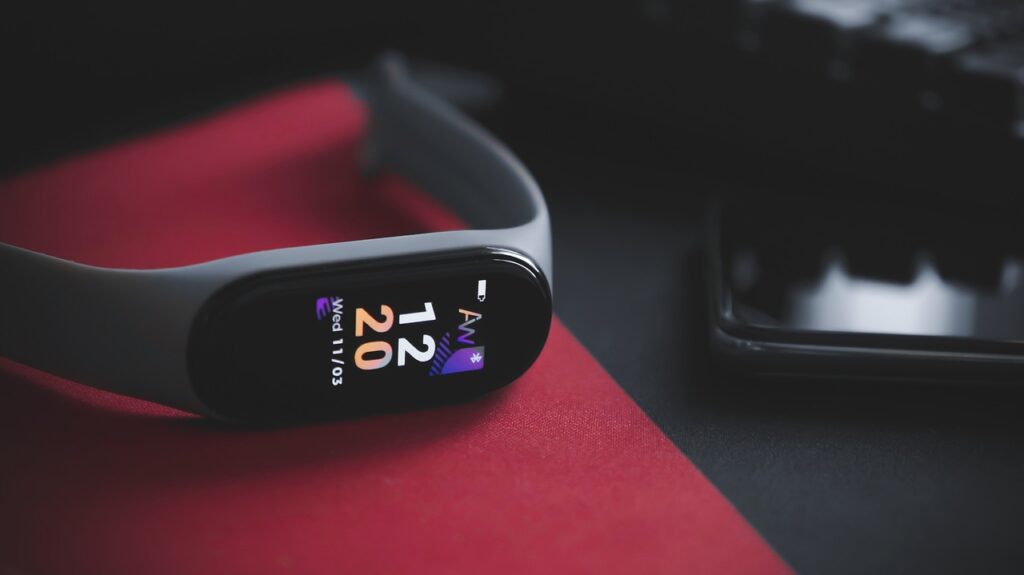
When was the last time you checked your pulse without rushing to a clinic? Probably this morning on your fitness band. From spotting irregular heartbeats to nudging us to move after hours of sitting, wearable technology in healthcare is becoming a daily health partner for many Indians. In metro cities and small towns alike, these smart devices are sparking real health conversations.
In this blog, let’s explore how this digital wave is reshaping our health journey, one step count at a time.
What is Wearable Technology in Healthcare?
Wearable technology in healthcare includes any body-worn smart device that monitors your health, be it a smartwatch tracking your heart rate or a smart ring measuring your oxygen. It’s about turning daily life into data that actually helps your doctor (or you) make better health decisions.
Nearly four in ten Indians, 37.5% to be exact, owned a smartwatch or fitness band. What began as fitness accessories has now changed into real health companions, keeping tabs on heart, sleep, and overall well-being. With that in mind, let’s unpack the actual benefits and check out the innovative devices making it all possible.
Top Benefits of Using Wearable Technology in Healthcare

Let’s be real; health tracking used to mean one dusty BP machine at home and waiting till things got serious. But now things have changed. Today, wearable tech is letting Indians keep an eye on their health before things go wrong, whether it’s their heart, sleep, sugar levels or even stress.
Here’s how these tiny gadgets are making a big difference in everyday lives.
1. Making Chronic Condition Management Less Stressful
Living with diabetes or high BP? You already juggle enough, so let your wearable take over some of the load. Today’s wearables do the boring bits for you, like tracking glucose, monitoring blood pressure, or keeping an eye on your breathing. The best part? All your data sits neatly inside an app, ready to show your doctor or just give you peace of mind.
Best Suited For
- People with diabetes, BP, or asthma
- Working professionals who need quick health updates without hospital visits
- 40+ individuals managing age-related health issues
2. Encourages Preventive, Not Just Reactive Care
In India, we often visit the doctor only after something goes wrong. But with wearables, your body starts speaking before the symptoms shout. A dip in oxygen, an odd heartbeat pattern, or restless nights could be signals of something deeper. These early nudges often convince people to get checked, and that’s how issues like sleep apnoea or respiratory trouble get caught before they get serious.
Best Suited For
- Busy professionals
- Elderly family members
- Anyone with a family history of heart or respiratory conditions
3. Supporting Women’s Health Smartly
Tracking periods on calendars? Been there. Forgetting ovulation windows? Guilty. But today’s wearables are changing the game by syncing cycle data, fertility windows, and even PMS mood swings into one smart dashboard. You get timely nudges and insights without needing 5 different apps or second-guessing your own body.
Best Suited For
- Women with PCOS or irregular periods
- Couples trying to conceive
- Women who are done with calendar math and guesswork
Tracking cycles is only step one, making lifestyle shifts matters too. Don’t miss this guide on Lifestyle Changes for Managing PCOS for Unmarried Women to start making real shifts.
4. Remote Monitoring for Elders and Families
With families spread across cities, wearable tech helps you care from a distance. Older parents wearing smart health bands can share vitals with their doctors or with you. Some wearables even offer fall alerts or SOS buttons for emergencies, which brings peace of mind for everyone.
Best Suited For
- NRI families staying connected with parents back home
- Working adults living in different cities from their elders
- Caretakers who want to stay connected to the elderly
5. Making Health Goals More Personal
Generic advice like “sleep more” or “reduce stress” is hard to follow. But when your wearable says you had only 4 hours of deep sleep or your stress index is high, it becomes real. Personalised data creates accountability, and that’s when goals turn into habits.
Best Suited For
- Young professionals building better health habits
- Students managing stress, sleep, or activity levels
- Users need data to stay consistent
You’ve seen what tech can do. Now see what you should do. Read Health and Wellness Importance in 2025 to stay truly ahead.
6 Best Healthcare Wearables You Can Buy in 2025
We’ve seen how wearable technology in healthcare is changing lives, but what does it actually look like on your wrist or in your pocket? From heart rate to hormone cycles, health wearables now give real-time answers. Here are the devices that are helping Indians stay informed without constant hospital visits.
1. QIOOB BP Smartwatch

For anyone dealing with high blood pressure, this smartwatch is a blessing in disguise. It doesn’t just track your steps; it monitors your BP, heart rate, and SpO₂ in real time, right from your wrist. With a built-in BP sensor and an easy-to-read display, it’s especially useful for older adults or people who want to keep a daily check without having to use traditional BP monitors every time.
💸Price & Where to Buy
Around ₹19,990 on Amazon and Qioob’s official website.
2. FreeStyle Libre 2 Glucose Monitor
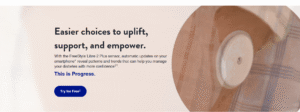
Diabetics know how painful and repetitive those finger pricks can be. Libre 2 replaces that with a painless patch on your arm that tracks your sugar levels in real time. Just scan it with your phone and you’ll get your current reading, history, and even trend graphs. It’s discreet, easy to wear for up to 15 days, and super useful for young adults, older parents, or anyone managing blood sugar daily.
💸Price & Where to Buy
₹10,500 for a 2-pack sensor kit on Amazon and select online stores.
3. Oura Ring Gen4

Not a fan of chunky wearables? The Oura Ring does all the health tracking without sitting on your wrist. It quietly keeps tabs on your sleep, periods, mood swings, and energy levels. Many women love it for tracking fertility signs or spotting early hormonal shifts. And the best part? It studies your patterns and gently guides you on when to rest or stay active. It’s super popular among those who want serious insights without wearing something that screams ‘gadget’.
💸Price & Where to Buy
Starts at ₹30,000. Available via the official website.
4. Muse 2 Brain-Sensing Headband

If stress and mental clutter are your daily battles, Muse 2 is for you. It tracks your brain activity with the help of ESG sensors while you breathe or meditate, and when your thoughts go off-track (hello, office deadlines mid-meditation), it gently steers you back using sound cues. It’s smart, sleek, and surprisingly soothing, especially if your brain never hits pause.
💸Price & Where to Buy
₹21,000–₹24,000 on Amazon India or through Muse’s official website (international shipping).
5. GOQii Smart Vital Max
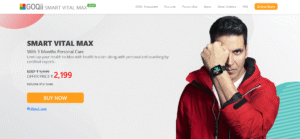
This one’s for people who want all the health basics covered without splurging ₹20k. The GOQii Smart Vital Max is an Indian wearable that tracks SpO₂, heart rate, body temperature, and sleep patterns, all packed into a sleek watch under ₹3,000. But here’s the catch: it’s not just about data. You get free access to doctors, health coaches, and fitness experts via the GOQii app, making it feel more like a health service than just a smartwatch.
💸Price & Where to Buy
₹2,999 on Amazon India, Flipkart, and the GOQii official site.
6. Bellabeat Ivy
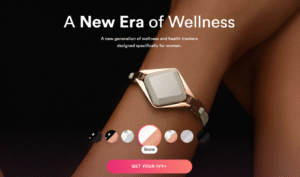
Bellabeat Ivy is not your typical fitness tracker; it’s designed by women for women. It tracks reproductive health, sleep cycles, stress levels and even provides a wellness score to help you balance your daily routine. It’s made without screens or distractions and syncs with the Bellabeat app for personalised insights. Perfect for anyone who wants focused, non-intrusive tracking with a chic touch.
💸Price & Where to Buy
Approximately ₹32,000 via Bellabeat’s official site and partner sites like Ubuy (international shipping available).
Kind of crazy how your watch knows when you’re stressed, right? Turns out, it’s AI doing most of the behind-the-scenes work in wearable technology in healthcare, and we’ve decoded it all in The Rise of AI in Fitness and Wellness Apps.
But, in spite of having so many options available in the market, these wearables are not without challenges.
Challenges of Using Wearable Technology in Healthcare
Let’s be honest, wearable health tech sounds great, but it’s not always smooth sailing. Here are a few real-world challenges people still face:
1. Not Always 100% Accurate
Your smart ring might say your oxygen dipped at night, but was it a real drop or just a loose fit? Some devices are more lifestyle tools than clinical-grade gadgets.
2. Expensive for Many Indians
While some watches start under ₹3,000, others like Oura or Bellabeat cost over ₹30,000. For many, that’s still out of budget, especially when cheaper alternatives might not be as reliable.
3. Battery Life & Maintenance Hassles
Daily charging, sensor replacements, or syncing issues can be annoying. The convenience sometimes comes with tech frustration.
4. Privacy and Data Misuse
All your health info sits in an app. But what happens if that data is sold or leaked? Not every brand has solid data protection policies, especially lesser-known ones.
5. Urban-Rural Divide
These devices are popular in cities, but in smaller towns, a lack of awareness or internet access holds people back. Plus, elders may struggle to use them without help.
However, in 2025, these wearables become too essential and trendy to avoid. Wanna know how? Go through the next section.
Real-Life Examples You’ll Relate To

Wearable tech isn’t just for gym buffs or Silicon Valley folks—it’s already part of daily life for many Indians. From college students to grandparents, these real stories show how small gadgets are making a big difference in health tracking, one notification at a time.
1. Smartwatch for Grandpa
Your grandfather stopped using the old BP machine and now wears a smartwatch that checks his blood pressure daily. His vitals sync to an app, and your cousin in Canada gets alerts too. It’s remote care made simple.
2. Tracking Sleep at Work
Your colleague always felt tired but never knew why—until her Oura Ring showed poor sleep patterns. She adjusted her bedtime routine and saw real improvement. Now, her “sleep score” is part of the morning coffee chat.
3. Catching COVID Early
A friend noticed his SpO₂ dipped one night on his fitness band. He got tested the next morning, positive. Because of early detection, he isolated early and avoided severe symptoms. The watch may have saved more than time.
4. Cycle Clarity for Her
Your cousin ditched confusing apps for a smart ring that tracks her period, mood, and ovulation. She feels more in tune with her body and plans her workouts accordingly. No more calendar math or PMS surprises.
5. Student’s Wake-Up Call
A college student realised he was only sleeping 4 hours and barely moving during exam week. His budget-friendly tracker gave him a reality check. Small steps, like evening walks and earlier nights, turned into consistent health wins.
The Future of Wearable Technology in Healthcare
If today’s wearable tech feels smart, the future is about to get way smarter. We’re moving beyond step counts and sleep scores into a world where these devices don’t just track your health—they help predict, prevent, and even intervene before things go wrong.
Here’s what’s coming next:
1. Integration with Telemedicine
Soon, wearable data won’t just sit in an app; it’ll talk directly to your doctor in real time. Platforms like Practo or Apollo TeleHealth are already exploring integrations. This means faster care, real-time interventions, and fewer clinic visits, especially for chronic patients and rural users.
2. Non-Invasive Monitoring
No more finger pricks or clunky machines. Future devices aim to monitor glucose, blood pressure, hydration, and even hormone levels through skin sensors or light signals. Companies like Apple and Samsung are investing heavily in this, and it’s only a matter of time before it’s affordable in India too.
3. Mental Health & Emotion Tracking
Mood rings, but make them smart. Emerging wearables will track not just stress but emotional patterns, detecting anxiety, burnout, or even early signs of depression. Combined with AI nudges, they could help users better manage emotional health without needing daily therapy sessions. Several companies, including Elon Musk’s company Neuralink, are also working on brain implants that could help people recover from traumatic brain injuries, alleviate mood disorders and assist those with communication disorders.
4. Smart Clothing & Invisible Tech
Health wearables are shrinking. In the near future, sensors could be woven into your clothes, shoes, or even undergarments. Think yoga pants that correct posture, or a T-shirt that tracks your heart rate and sweat levels while you walk to work. It’s wearable tech without the “wearable” look.
What It Means for India
India’s digital health boom is just getting started. As prices drop and tech literacy improves, wearable tech will move from metro trends to everyday essentials in Tier 2 and Tier 3 cities. With the government’s focus on preventive care and startups building India-first solutions, the future of health won’t be in hospitals; it’ll be on your wrist, in your ring, or stitched into your sleeve.
Final Thoughts
Staying healthy doesn’t need to be a big plan or a perfect routine. Sometimes, it’s just noticing your heart rate while you walk or checking your stress level after a long day. That’s the quiet power of wearable technology in healthcare; it reminds us to check in, even when life gets busy.
Using a wearable that actually helped you feel better or one that totally disappointed you? Spill the tea in the comments! We’re all learning together here.

